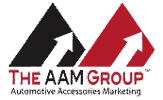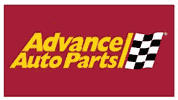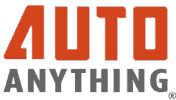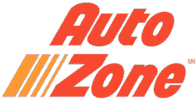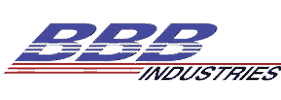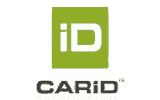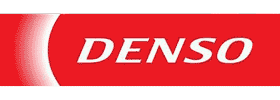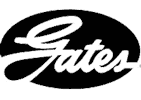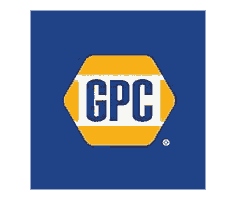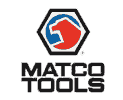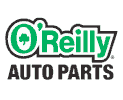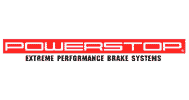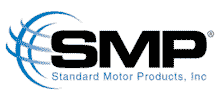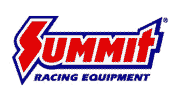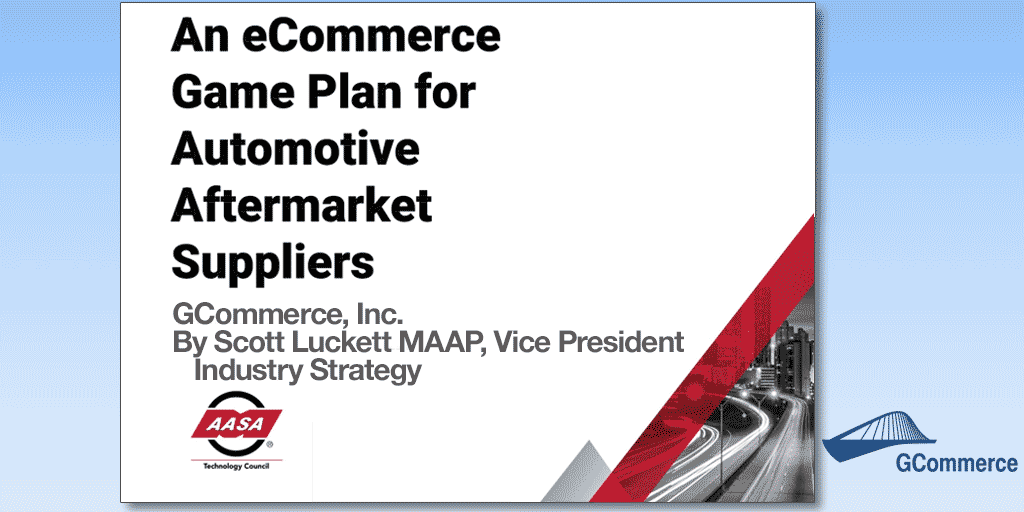
Learn Why Having an eCommerce Game Plan is Important and Get Tips on Creating a Plan
![]() Click to Download the eCommerce Game Plan for Automotive Aftermarket Suppliers
Click to Download the eCommerce Game Plan for Automotive Aftermarket Suppliers
Sales in aftermarket automotive parts have grown exponentially year over year since the mid-2010s but in the last few years the growth has been unprecedented. This is, in no small part, due to the buying changes brought on by the pandemic. These buying changes are here to stay and the manufacturers and distributors with an eCommerce gameplan in place are best positioned to grow and improve their market share.
Recently, AASA and the Auto Care Association published a joint study that included the following findings:
• Online sales represent a 12% share of all light-duty parts sales in the U.S. aftermarket, totaling $34.7 billion
• eCommerce has grown at a Compound Annual Growth Rate (CAGR) of 20% over the last decade. That’s an average of 20% each year for 10 years
• The pandemic accelerated the adoption of eCommerce and created new buying habits which are here to stay
• eCommerce continues to grow in the aftermarket and is expected to top $50 Billion by 2025
eCommerce Standards and Best Practices
There are specific drivers and eCommerce best practices that need to be in place to create an efficient and sustainable automotive digital marketing strategy. Product information or content, Pricing, Assortment, and Fulfillment are the drivers that currently lead the charge to success in the automotive aftermarket eCommerce world.
Auto Parts Content:
Auto Parts Content: Automotive eCommerce starts with product details and content. ACES (Catalog Information) and PIES (Product Data) are the current standards for this information and are available to distributors, manufacturers, and store owners. High-quality digital images of products and aftermarket auto parts are the third piece of that puzzle. Online marketplaces want the most current, complete, and high-quality product content and fitment information.
Pricing:
Your automotive products are probably already being sold on the marketplaces. Marketplaces need
to have a consistent sell price, regardless of where the product is being shipped, which requires them to have a consistent acquisition cost.
Assortment:
The more SKUs you list online, the higher your sales will be. What may be a slow-mover
in the brick & mortar world is often a fast-mover online. Shoppers go online in search of
hard-to-find products, long-tail items, or brand-new product introductions.
Fulfillment:
Once an order is placed, it all comes down to fulfillment. Proximity to the end customer
keeps freight costs to a minimum. Marketplaces aim to provide delivery in two days or less without expedited handling for 80% of shipping addresses. Rapid order turnaround and very high accuracy are valued and measured by the marketplaces. Automotive parts drop shippers play a huge role in shipping products from the best locations for the lowest prices.
The Distributor as the Vendor of Record
One method of drop shipment is for you to back up the inventory of your distributor customers. In this model, the Distributor is the vendor of record and you are working with them. The Distributor may have some 1P stock business, but it is most likely a 1P drop ship that accounts for most of the transactions.
The Brand Owner as the Vendor of Record
In an alternative strategy, the marketplace wants to stock some of your faster-moving products, and have others drop shipped. The marketplace wants a low and consistent acquisition cost. They require EDI and API integrations, the accuracy of the scan to pack, as well as both carton and pallet label capabilities. In this model, the brand owner is the vendor of record and is working with distribution to maximize sales in the marketplace.
Digital Growth in Automotive Aftermarket
With a growth trend of 20% or better per year, eCommerce in the automotive aftermarket is expected to reach $50 billion in the near future, so it is important for your company to have an eCommerce strategy and playbook.
Brand owners and distributors are both needed to enable the infinite aisles and service
levels required by the marketplaces. eCommerce requires collaboration between brands
and distribution to meet the requirements of the fastest-growing channel of the sale in the
industry. Powerful business solutions and platforms are available that deliver a high
level of control over brand equity.
This blog represents a small sample of what the Creating an eCommerce Gameplan for Automotive Aftermarket Suppliers whitepaper covers. Please visit the GCommerce case studies page for the full whitepaper.


